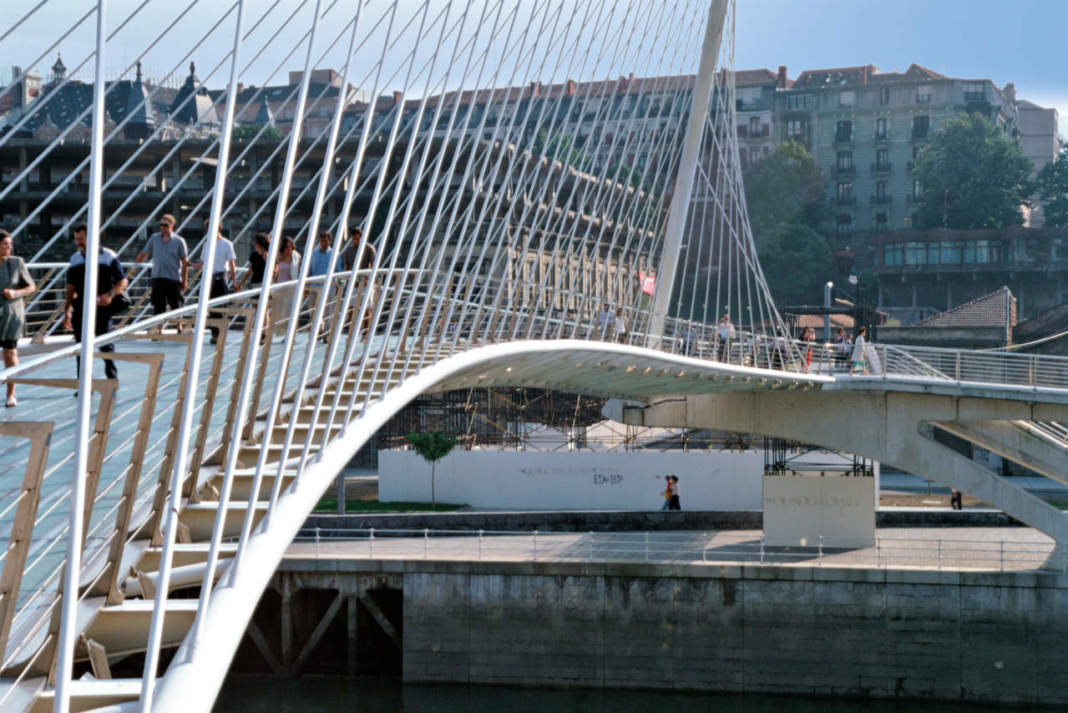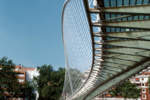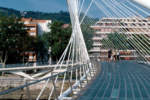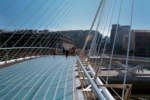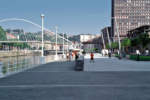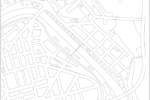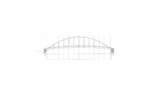architect: Santiago Calatrava
location: Bilbao, Spain
year: 19941997
The footbridge on the Rìa di Bilbao represents a continuation of the Calle Ercilla from the city center; it connects the Uribitarte commercial area, in disuse, with the banks of the Campo de Volantin river. It is a kind of suspended flyover which crosses the Nervíon river, guiding pedestrians towards the Guggenheim Museum. Calatrava has further developed his research on the tied arch, experimented the first time with the design of the Gentil bridge in Paris. The structure is characterized by two elements, the parabolic arch with a span of 71 meters, and lateral ramps which serve as connection with the shoulders. The inward-sloping 14.50 meters tall steel arch – light and graceful – with triangular section supports the structure, consisting of prefabricated elements in reinforced concrete, by means of hinged blade-shaped elements placed at intervals of 5.7 m, which make the bridge appear like a frozen pendulum. The box-shaped steel beam of the structure, with a curved plan and triangular section, 90 cm tall and reinforced by longitudinal ribs, features a rise of about 3 m in the central part with respect to the extremities. The torsion developed in the points of suspension of the blades by the eccentricity of the weight on the walkway is balanced by the curve of the box-shaped beam which transfers the sum of the torsion loads to the reinforced concrete foundations. The installation of a lighting system has exalted its plasticity, making the itinerary a fascinating meeting place. The meeting bridge is perfectly suited to the urban context of Bilbao, a city which underwent radical changes in those years.
location: Bilbao, Spain
date: 1994-1997
design architects: Santiago Calatrava
program: pedestrian crossing


